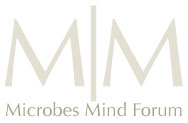Home

COLLABORATIVE INTELLIGENCE:
from CrowdSourcing to Intelligent Integration
Collaborative intelligence (C-IQ) derives its principles from theory in biology, complex systems, and computer science — principles for next generation search, collaborative problem-solving, and Data-Interpretation (data + interpretation fusion). Each frontier reveals new evidence of the profound coupling of life and mind. Big questions:
Design Method
What design method harnesses the collaborative intelligence of humans, toward sustainable futures, tapping principles and dynamics of life-like systems? As humans “re-terraform Earth” what design method can harness our collaborative intelligence as a networked (living, systemic) global mind?
Life and Cognition, Microbes and Mind
Did some form of cognition define the threshold when the origin of life occurred? Is intelligence a basic defining attribute of life? Is intelligence life-like? How can the origin and evolution of life-like systems, and artificial life systems evolving to become life-like in silico, shed light on intelligence and creativity as emergent phenomena?
Research on origins, evolution, and syntheses of life
How did self-organization and evolution give rise to complex, life-like systems and how can these dynamics inform our futures? How can we move beyond the Tragedy of the Commons as a necessary outcome of evolutionary dynamics to evolve toward sustainable futures, channeled by constraints that unleash innovative potential, designing multi-agent, problem-solving systems.
Deriving the principles and theory of collaborative intelligence
What principles and design method converge toward collaborative intelligence? Are they informed by debates about whether Darwinism fully accounts for how life evolved toward increased functional effectiveness, or whether developmental mechanisms, including signaling and information processing, inform our understanding of how life converts randomness to order as evolution generates effective novelty?
New Tools and Smart Systems
How can understanding life-like systems inform design of next generation tools and social networks for collaborative problem-solving, better systems for search and knowledge integration, integrated smart technology, enabling society’s global brain to tackle Earth systems scale global problem-solving?
